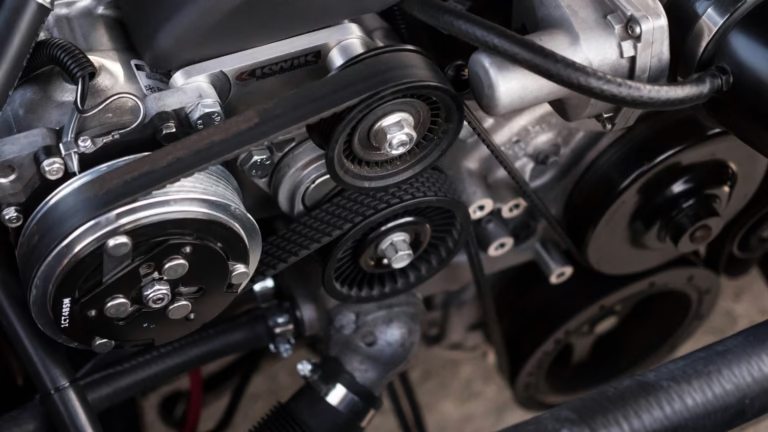
Introduction
The BMW 3 Series is one of the most iconic and best-selling luxury sedans in the world. While its performance and handling are highly praised, older models (especially E90 and early F30 generations) are known to suffer from automatic transmission issues.
Common symptoms include:
- Hard or delayed shifting
- Gear slipping
- Transmission warning lights
- Jerky acceleration
This comprehensive guide will walk you through how to diagnose, repair, and prevent automatic transmission problems in your BMW 3 Series — without spending a fortune at the dealership.
What Causes BMW 3 Series Transmission Problems?
1. Low or Dirty Transmission Fluid
BMW often claims the transmission fluid is “lifetime,” but that’s misleading. Over time, fluid degrades, especially if you drive in stop-and-go traffic or tow frequently.
2. Faulty Mechatronics Unit
This unit controls gear selection electronically. If it fails, it can cause harsh shifting or complete gear failure.
3. Worn Torque Converter
This can cause slipping or strange noises when driving or shifting gears.
4. Software Issues
Older BMWs often need transmission control unit (TCU) software updates to improve shifting behavior.
Tools & Materials Needed
- Car jack + jack stands
- 17mm socket (for drain plug)
- T40 Torx bit (for pan bolts)
- Transmission fluid (ZF Lifeguard 6 or equivalent)
- Replacement filter + gasket kit
- Drain pan
- Torque wrench
- Funnel and fluid pump
- Scanner tool (optional, but helps diagnose codes)
Step-by-Step: How to Fix BMW 3 Series Transmission Problems
Step 1: Scan for Error Codes
Before doing any repairs, scan your vehicle using an OBD-II scanner. If possible, use a BMW-specific tool like INPA, Carly, or Foxwell NT510 to access transmission modules.
Common error codes:
- 4F85: Gear monitoring fault
- 4F8A: Mechatronics failure
- P07 codes: Torque converter slip
If you see any of these, it’s best to flush the transmission, replace the filter, and reset adaptations (explained later).
Step 2: Raise the Vehicle and Locate the Transmission
Safely jack up the vehicle and place it on jack stands. The transmission pan is typically located under the car, just behind the engine, protected by a plastic skid plate.
Remove the skid plate using a 10mm or 8mm socket.
Step 3: Drain the Transmission Fluid
- Place your drain pan under the transmission.
- Use a 17mm socket to loosen the drain plug and let the old fluid drain out completely.
- Let it drip for 10–15 minutes.
⚠️ Warning: The fluid may be hot and pressurized. Make sure the vehicle has cooled before starting.
Step 4: Remove the Transmission Pan & Filter
- Use a T40 Torx to remove all pan bolts.
- Gently pry the pan off — be prepared for more fluid to drain.
- Remove the old filter (pull-down type on ZF transmissions).
Inspect the magnet in the pan for excessive metal shavings — this can indicate internal wear.
Step 5: Clean & Reinstall
- Clean the transmission pan, magnet, and gasket surface.
- Install the new filter into place.
- Place the new gasket on the pan and reinstall it with bolts.
- Torque each bolt evenly to manufacturer spec (around 10 Nm).
Step 6: Refill Transmission Fluid
- Locate the fill plug (usually on the side of the pan).
- Use a fluid pump and funnel to add BMW-approved fluid like ZF Lifeguard 6.
- Continue adding fluid until it drips out of the fill hole.
⚠️ The engine should be running and the transmission in park while you top it off.
You must also cycle through all gears for 5–10 seconds each before final level check.
Step 7: Reset Transmission Adaptations (Optional but Recommended)
Once the fluid change is complete, resetting the transmission adaptations helps your TCU “relearn” shifting behavior.
- Use a BMW scanner tool (INPA or Foxwell)
- Go to Transmission > Reset Adaptations
This can resolve jerky or hesitant shifts after a fluid change.
When You Need a Specialist
If after fluid replacement and adaptation reset the issues still persist, you may need:
- Mechatronics repair or replacement (~$900–$2,000)
- Torque converter replacement (~$1,500–$2,500)
- Complete transmission rebuild (if internal damage)
At that point, it’s worth getting a professional diagnosis from a BMW transmission specialist.
Preventing Future Transmission Problems
- Change fluid every 60,000 miles, even if BMW says it’s “lifetime”
- Avoid aggressive driving in cold weather
- Use the parking brake before shifting into Park
- Don’t ignore warning lights or odd shifting behavior
- Warm up the engine before driving aggressively
Final Thoughts
BMW 3 Series models are a joy to drive, but transmission issues can turn ownership into a headache — especially in high-mileage cars. With this guide, you now know how to:
- Diagnose common transmission symptoms
- Replace fluid and filter step-by-step
- Reset adaptations to improve shifting
- Avoid common damage through smart habits
Whether you’re a DIY enthusiast or just trying to save on repair bills, this guide can keep your BMW 3 Series shifting smoothly for years to come.
Need more car repair guides like this? Bookmark carcarebasic.com for more DIY-friendly articles that help you fix your ride — one repair at a time.



